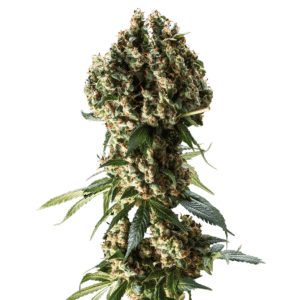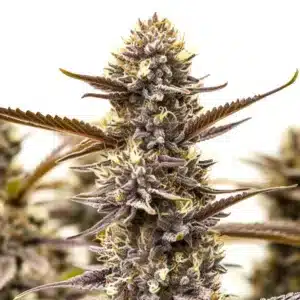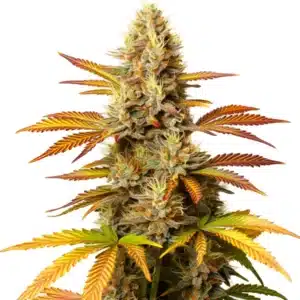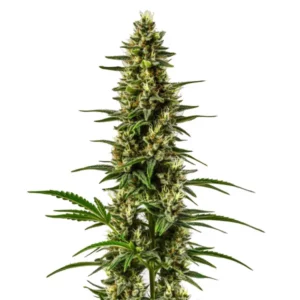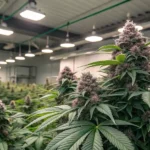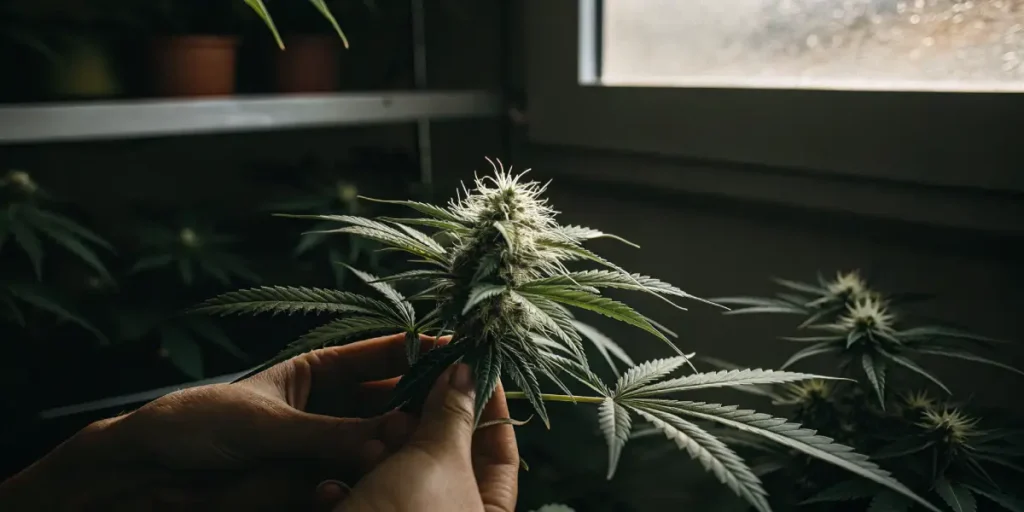
How to Manipulate Apical Dominance in Cannabis
Apical dominance in cannabis is the plant’s natural tendency to grow more vigorously at the top. It’s like the plant’s way of reaching for the sky. But what if you want bushier plants? That’s where knowing how to manipulate apical dominance in cannabis comes into play. By encouraging more lateral growth, you can increase your yield.
For those new to growing cannabis or even experienced cultivators, the phrase “apical dominance” might sound technical. In simpler terms, it’s the plant’s instinct to prioritize its main stem. By learning methods to alter apical dominance in cannabis plants, you can shape your plant to better suit your growing space and maximize output.
Recommended Strains
Granddaddy Purple
|
|
THC | 25% (High) |
|
|
Type | Feminized |
|
|
Yield | Medium |
|
|
Phenotype | 70% Indica / 30% Sativa |
GG4
|
|
THC | 27% (High) |
|
|
Type | Feminized |
|
|
Yield | High |
|
|
Phenotype | 40% Indica / 60% Sativa |
For instance, if you’re growing a strain like Gorilla Glue 4 from Blimburn Seeds, managing its apical dominance can help you achieve a more balanced canopy. This strain is known for its robust growth, and with the right techniques, you can enhance its potential.
Techniques for Controlling Apical Dominance in Cannabis
One of the most popular techniques for controlling apical dominance in cannabis is topping. Topping involves cutting the main stem, encouraging the plant to grow two new main stems. This simple cut can transform your plant’s growth pattern, leading to a wider, bushier structure.
Another effective method is low-stress training (LST). This involves gently bending the branches and tying them down. By doing so, you expose more of the plant to light, promoting even growth across all branches. LST is particularly useful for strains like Blue Dream from Blimburn Seeds, which can be quite vigorous.
Knowing how to manipulate apical dominance in cannabis involves a keen observation of the plant’s growth habits. By identifying which branches are competing for dominance, you can apply these techniques more strategically. This can result in a more uniform plant structure, optimizing the plant’s ability to produce more buds.
Besides to topping and LST, super cropping is another method to alter apical dominance in cannabis plants. This technique involves gently pinching and bending the stems, which strengthens them and encourages more lateral growth. By combining these techniques, you can effectively manage the plant’s growth to suit your cultivation goals.
Topping Your Cannabis Plants
To understand topping, imagine trimming the tip of a plant to encourage two new shoots. This is a common method for altering apical dominance in cannabis plants. When you top a plant, it diverts energy to the side branches, creating a fuller plant over time.
The best time to top your cannabis is after the plant has developed 4-6 nodes. Use clean, sharp scissors to make a clean cut above a node. This precise cut ensures the plant heals quickly and redirects its growth.
Topping not only changes the plant’s physical appearance but also its energy distribution. By redirecting growth hormones from the main stem to the lateral branches, you encourage a more balanced growth that supports multiple bud sites. This approach is essential in how to manage apical dominance in marijuana cultivation.
After the initial topping, you may opt to top your plants again after they have recovered. Repeated topping can further promote bushiness and canopy evenness, especially in strains known for vertical growth. Monitoring the plant’s recovery closely ensures that each topping contributes positively to its overall health and yield.
Promos & Deals
Strategies for Modifying Apical Dominance in Cannabis Growing
Pruning is another strategy for modifying apical dominance in cannabis growing. By removing certain branches, you can focus the plant’s energy on more productive areas. This not only manages the plant’s height but also improves air circulation.
Defoliation, a form of pruning, involves removing some of the leaves to allow more light to penetrate the canopy. This technique is beneficial for strains like Granddaddy Purple, which can have dense foliage.
Effective pruning requires an understanding of the plant’s structure and growth patterns. By selectively removing branches that are underperforming or blocking light, you allow the plant to channel energy into more promising growth areas. This strategic approach is part of the broader strategies for modifying apical dominance in cannabis growing.
Incorporating regular pruning sessions into your cultivation schedule can lead to significant improvements in plant health and productivity. As you become more familiar with your plant’s specific needs, you can tailor your pruning techniques to optimize growth and yield, making the most of your available growing space.
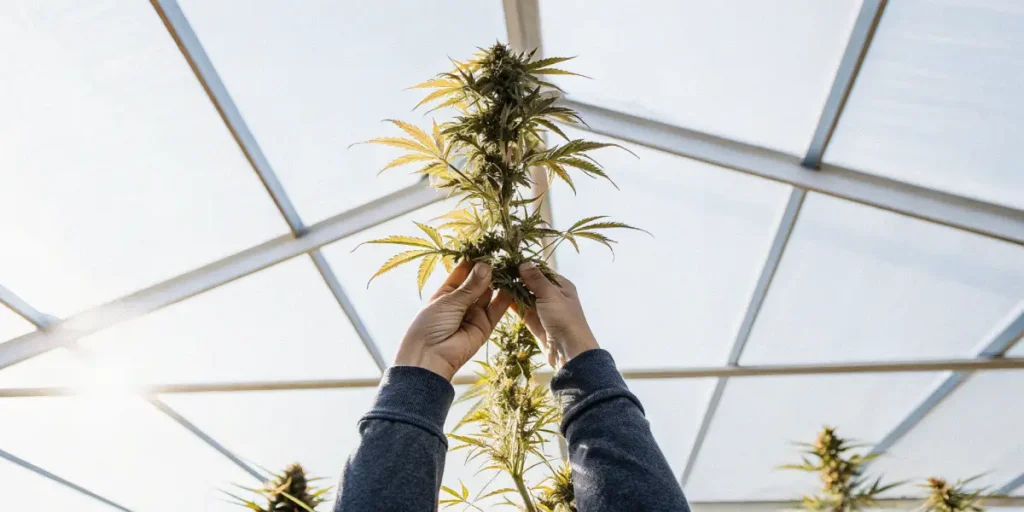
Pruning for Better Growth
Pruning is about more than just cutting away excess foliage. It’s a targeted approach to shaping your plant. By selectively removing branches, you encourage the plant to focus its growth on the remaining parts.
When pruning, always use clean, sterile tools. This minimizes the risk of infection. Focus on removing lower branches that receive less light and any dead or weak growth. This helps the plant allocate resources more efficiently.
Pruning promotes better nutrient distribution within the plant, allowing it to develop stronger and more productive branches. By understanding how to manipulate apical dominance in cannabis through pruning, you can enhance the plant’s resilience and ability to support more flowers or buds.
Regular pruning also helps in maintaining an optimal plant size for your growing environment. By keeping the plant’s height and width in check, you ensure that it remains manageable and continues to receive adequate light and air circulation, contributing to healthier growth.
Low-Stress Training (LST) Techniques
Low-stress training (LST) is a gentle technique that bends and ties down branches. Unlike topping, which involves cutting, LST is all about guiding the plant’s growth. This method is ideal for growers who want to avoid the stress of cutting.
Start LST when your plant is young and the branches are flexible. Use soft ties, like garden wire or string, to secure the branches in place. Bend them gently to form a more even canopy.
LST offers a subtle yet effective way to manipulate plant growth without causing significant stress. By gradually training branches to grow horizontally, you can create a more uniform canopy that maximizes light distribution and air flow, essential for robust plant development.
Combining LST with other techniques for controlling apical dominance in cannabis can yield impressive results. By working with the plant’s natural tendencies and guiding its growth, you can achieve a balanced structure that supports a higher number of flowering sites, ultimately boosting your harvest quality and quantity.
Tips for Influencing Apical Dominance in Cannabis Gardening
The environment plays a crucial role in influencing apical dominance. Light, temperature, and humidity all affect how a plant grows. Providing the right conditions can naturally encourage more lateral growth.
For instance, using a grow light that evenly covers the canopy can prevent the plant from stretching towards a single light source. This encourages a more balanced growth pattern, making it easier to apply the techniques discussed.
Understanding the environmental factors that influence plant growth is key to effective cultivation. By maintaining optimal conditions, you can reduce the plant’s reliance on apical dominance and promote more even growth across the canopy. This is one of the essential tips for influencing apical dominance in cannabis gardening.
Adapting your growing environment to suit the needs of your cannabis plants can significantly impact their overall health and productivity. Monitoring and adjusting factors like light intensity, temperature, and humidity ensures that your plants thrive and respond well to the methods used to alter apical dominance in cannabis plants.
Environmental Factors
Light is perhaps the most important environmental factor. Ensure your grow light is evenly distributed across the canopy. This prevents the plant from reaching for the light, which can reinforce apical dominance.
Temperature and humidity also impact plant growth. Keep temperatures stable and avoid extreme changes. Cannabis plants prefer moderate humidity levels, which helps them thrive without excessive stretching.
By optimizing light distribution, you encourage plants to focus on lateral growth instead of vertical stretching. This approach is integral to how to manipulate apical dominance in cannabis effectively, ensuring a more uniform and productive canopy.
Stable environmental conditions also help prevent stress-related issues. By avoiding fluctuations in temperature or humidity, you provide a stable base for your plants to grow, which supports the use of various strategies for modifying apical dominance in cannabis growing.
Choosing the Right Strain
Choosing a strain that suits your growing conditions is crucial. Some strains naturally grow bushier, while others may require more intervention. For example, strains like Gorilla Glue 4 are naturally vigorous, making them ideal for training techniques.
Researching and selecting the right strain from Blimburn Seeds can make a big difference. Consider your growing space and experience level when choosing. This helps you manage expectations and apply the techniques effectively.
Knowing the growth tendencies of different strains allows you to customize your cultivation techniques to best suit each plant’s characteristics. This knowledge is invaluable when learning how to manage apical dominance in marijuana cultivation, as it guides your approach to training and pruning.
By selecting strains that align with your cultivation goals and environmental conditions, you set the stage for successful manipulation of apical dominance. This strategic selection process ensures that your efforts in training and managing growth are met with optimal results, maximizing both yield and plant health.

FAQs
What is apical dominance in cannabis?
Apical dominance is the natural tendency of a cannabis plant to grow taller with a single main stem. This dominant growth is controlled by hormones within the plant that prioritize the main stem over others. It’s the plant’s way of maximizing light exposure in its natural environment.
However, in controlled growing environments like indoor gardens, this trait can lead to uneven growth and reduced yields. By understanding how to manipulate apical dominance in cannabis, growers can encourage more balanced growth, resulting in bushier plants and potentially higher yields.
Grasping the concept of apical dominance allows growers to take a more proactive role in shaping their plants’ growth. This knowing is foundational to employing techniques for controlling apical dominance in cannabis, which can lead to healthier and more productive plants.
By learning to manipulate this natural growth tendency, you can enhance your control over the cultivation process. This not only improves the plant’s physical structure but also optimizes its ability to produce higher quality buds, aligning with your overall cultivation goals.
Why should I manipulate apical dominance in my cannabis plants?
Manipulating apical dominance allows growers to control the shape and growth pattern of their cannabis plants. This manipulation can lead to more efficient use of light, better air circulation, and increased yields. Techniques like topping and LST can transform a tall, spindly plant into a bushier, more productive one.
For example, using these techniques on a strain like Blue Dream can maximize its potential. By spreading out the growth, you’re ensuring that more buds receive optimal light, leading to higher quality and quantity of harvest.
Knowing how to manipulate apical dominance in cannabis is crucial for maximizing your growing space and resources. By guiding the plant’s growth, you ensure that each part of the plant receives adequate light and nutrients, which can substantially increase overall yield and quality.
Moreover, manipulating apical dominance can help you create a more aesthetically pleasing garden. By managing the shape and size of your plants, you create a harmonious growing environment that is both efficient and visually appealing, enhancing your overall cultivation experience.
How often should I top my cannabis plants?
Topping can be done multiple times throughout a cannabis plant’s vegetative stage. The first topping is usually done after the plant has developed 4-6 nodes. Once the plant has recovered and new growth is established, additional toppings can be performed to further encourage lateral growth.
However, it’s important to allow the plant time to recover between toppings. Over-topping can stress the plant and stunt growth. Monitoring the plant’s health and response is key to determining the appropriate frequency.
Knowing the right timing for topping is essential to how to manage apical dominance in marijuana cultivation. By carefully observing your plant’s growth and recovery, you can determine the best intervals for topping to achieve the desired plant structure.
Every strain responds differently to topping, so it’s beneficial to experiment and find the optimal approach for each type. This tailored approach ensures that you maximize the benefits of topping while minimizing the risk of stress or damage to the plant.
Can I use LST and topping together?
Yes, combining LST and topping can be very effective. Topping creates multiple main stems, while LST helps guide the growth of these branches for a more even canopy. Together, these techniques can significantly alter the growth pattern of your cannabis plants.
For instance, after topping a Granddaddy Purple plant, you can use LST to spread out the new growth. This combination maximizes light exposure and air circulation, contributing to healthier plants and increased yields.
Using both LST and topping provides a comprehensive approach to how to manipulate apical dominance in cannabis. This synergy allows you to fine-tune your plant’s structure, ensuring that it remains balanced and productive throughout its growth cycle.
When applied correctly, this combination of techniques can lead to impressive improvements in both plant health and yield. By encouraging a more even distribution of light and resources, you enhance the plant’s ability to produce larger, more robust buds.
What are the risks of manipulating apical dominance?
While manipulating apical dominance can be beneficial, there are risks involved. Improper topping or LST can stress the plant, making it susceptible to disease or stunted growth. It’s crucial to use clean tools and gentle techniques to minimize these risks.
Additionally, some strains may respond differently. It’s important to monitor each plant’s response and adjust your approach as needed. Researching specific strains from Blimburn Seeds can provide insights into how they might react to different techniques.
Being aware of the potential risks helps you take a more cautious approach when learning how to manipulate apical dominance in cannabis. By staying informed and attentive, you can avoid common pitfalls and ensure your plants remain healthy and vigorous.
Moreover, knowing the unique characteristics of different strains allows you to tailor your techniques, reducing the likelihood of stress or damage. This careful consideration is key to achieving successful outcomes in your cannabis cultivation endeavors.


